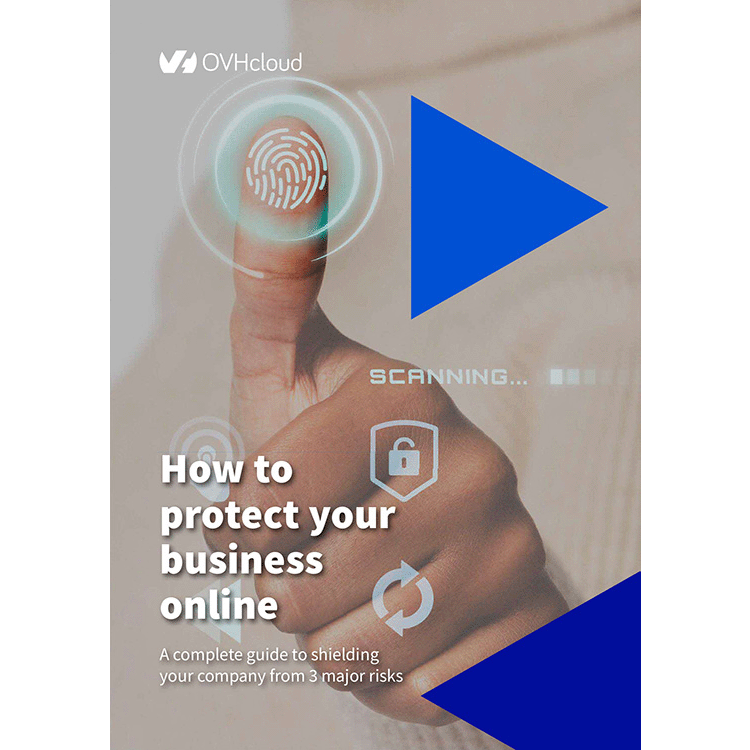Protect Cyberthreats
How to Protect Your Organisation Against Cyberthreats
Nearly every company with a digital footprint is at risk for cyberattacks. Your organisation’s information systems, websites, smart devices, and even your online bank accounts represent endpoints or vulnerabilities that threat actors can weaponise.

In the past few years, we’ve seen dramatic increases in both the number of cyberthreats and their impact:
- The annual cost of cybercrime to the global economy reached €5.5 trillion at the end of 2020.
- In 2021, 28% of European small or medium-sized enterprises (SMEs) experienced at least one type of cybercrime.
- In the first quarter of 2023, data breaches exposed more than six million data records worldwide.
In addition to negative financial impact, cybersecurity incidents can damage your brand’s reputation and cause significant supply chain and productivity disruption. Now, more than ever, it’s essential for small and medium-sized businesses (SMBs) without large IT teams to be proactive in protecting their IT infrastructure from cyberthreats.
Top cyberthreats for SMBs in Europe
Cyberthreats are attempts by single threat actors or groups to access or interfere with an individual’s, organisation’s, or government’s information systems or data. Last year, the Council of the European Union released a list of the top cyberthreats impacting the EU.
They include:
- Ransomware: This refers to attacks where cybercriminals take control of a target’s asset and demand a ransom to release the asset. Through ransomware, threat actors steal more than ten terabytes of data monthly. Ransom amounts are also growing — in January 2023, Royal Mail in the U.K. was the victim of a cyberattack, and the threat actors demanded a ransom of £67 million.
- Distributed denial-of-service (DDoS) attacks: DDoS disrupts the regular traffic of a server, service, or network by overloading the target (or the target’s surrounding infrastructure) with internet traffic.
- Malware: Refers to any piece of software that performs data theft or another action compromising a computer, network, or server.
- Social engineering: These cyberattacks exploit human error or behaviour to access information or services. 82% of SME data breaches in the EU involved a human element, and phishing scams are one of the most popular forms of social engineering. When phishing, threat actors use deceptive emails, texts, and websites to trick targets into divulging sensitive data like login credentials, banking information, or credit card details.
- Supply chain attacks: Threat actors target an organisation through its supply chain’s vendors, which can produce a cascading or concentration effect.
The future of cyberthreats and AI
The cyberthreats list is by no means exhaustive and threats continue to evolve with the creation of new technology. For example, with the explosive growth and adoption of artificial intelligence (AI), threat actors can leverage the technology to develop new malware variants, more effective email and text-based phishing communication, and increase the breadth and scope of attacks.
Moving forward, organisations must keep abreast of AI’s continued influence in the threat landscape while becoming more adept at using AI-powered cybersecurity tools.
Cybersecurity best practices for SMBs
In the face of a rapidly changing threat landscape, organisations must develop robust cybersecurity strategies. While there isn’t a universal approach to protection, there are a few key behaviours and practices your organisation should adopt.
Raise awareness for employees
When it comes to your organisation’s infrastructure and endpoints, employee awareness and training are the first line of defence against cyberattacks. Initiating education and training sessions to identify and respond to cyberthreats appropriately can help reduce the likelihood of your organisation falling prey to attacks like phishing scams. It’s also important to train employees to recognize a phishing attack, whether it occurs via email or text, and create protocols for reporting phishing attempts.
In addition to raising employee awareness, here are a few employee security practices to implement across your organisation:
- Require multi-factor authentication (MFA).
- Enforce strong password policies.
- Discourage unauthorised downloads.
- Remind employees not to access sensitive company data on unsecured devices.
Every October is European Cybersecurity Month (ECSM), which promotes cybersecurity awareness through hundreds of events across Europe and through access to free materials that help organisations strengthen their online security posture. During the month, OVHcloud hosts daily cybersecurity sessions for all employees and recommends that organisations utilise ECSM materials to build a security-minded work culture.
Protect your sensitive data
Regardless of industry, your company most likely handles a large amount of sensitive data. From employee payroll data to your closely guarded intellectual property, protecting this information from threat actors is crucial.
Consider implementing multiple layers of secure data encryption storage. This may include:
- Practising cloud storage encryption, which secures data as it travels to and from your cloud-based applications.
- Utilising access control to limit unauthorised access to data.
- Scrubbing your data or performing deduplication to delete obsolete data.
- Minimising the total amount of data that you collect and store.
Develop a response plan
Even with the prevalence of cyberthreats, organisations are often unprepared when an attack occurs. Developing a response plan can significantly diminish the scope of an attack’s impact on your company, support business continuity during and after the attack, and help protect your brand’s reputation.
A good cyber incident response plan usually includes the following:
- Named members of an incident response team in your organisation. The response team should include decision-makers in multiple departments.
- Plans to contain or eradicate a threat after it has been identified.
- Identification of critical assets across your organisation and a process for monitoring them before, during, and after an attack.
- Creation of a detailed communications strategy across the company’s website and social media channels.
You should also plan to test and regularly update your response plan to make sure it’s meeting your company’s security needs and can adequately address evolving threats in the landscape.
The role of secure solutions in cybersecurity
More than ever, companies are investing in cybersecurity technologies. The International Data Corporation estimates that global security spending will reach €207 billion by the end of 2023. To maximise their resources, organisations need to strategically purchase solutions that provide security against evolving threats without compromising performance.
The OVHcloud difference
Adding secure solutions to your company’s technical infrastructure can make a difference in its security posture. OVHcloud offers a range of solutions to strengthen your organisation’s cybersecurity posture against cybercrime. Here are some of OVHcloud’s key security features:
- Two multi-factor authentication methods: one-time password (OTP) and Universal 2nd Factor (U2F).
- Dedicated anti-DDoS infrastructure to prevent illegitimate traffic from overwhelming your OVHcloud-hosted website.
- Identity and Access Management (IAM), which manages the identities of your company’s users, applications, and permissions in a single interface for all of your OVHcloud products.
- Defence against DNS server attacks with Domain Name System Security Extension (DNSSEC) that prevents threat actors from manipulating DNS request responses.
- Anti-spam and -spoofing features for your company’s emails
- Automatically configured security protocols like SPF, DKIM, and DMARC.
- Redundant email data storage in up to three OVHcloud-managed datacentres, so it’s easier to reclaim data during a disruption.
- Other servers solutions with VPS and Eco servers that allow you to manage your own virtual or physical server.
For over 20 years, OVHcloud has helped organisations scale and push their digital transformations further without sacrificing security.
